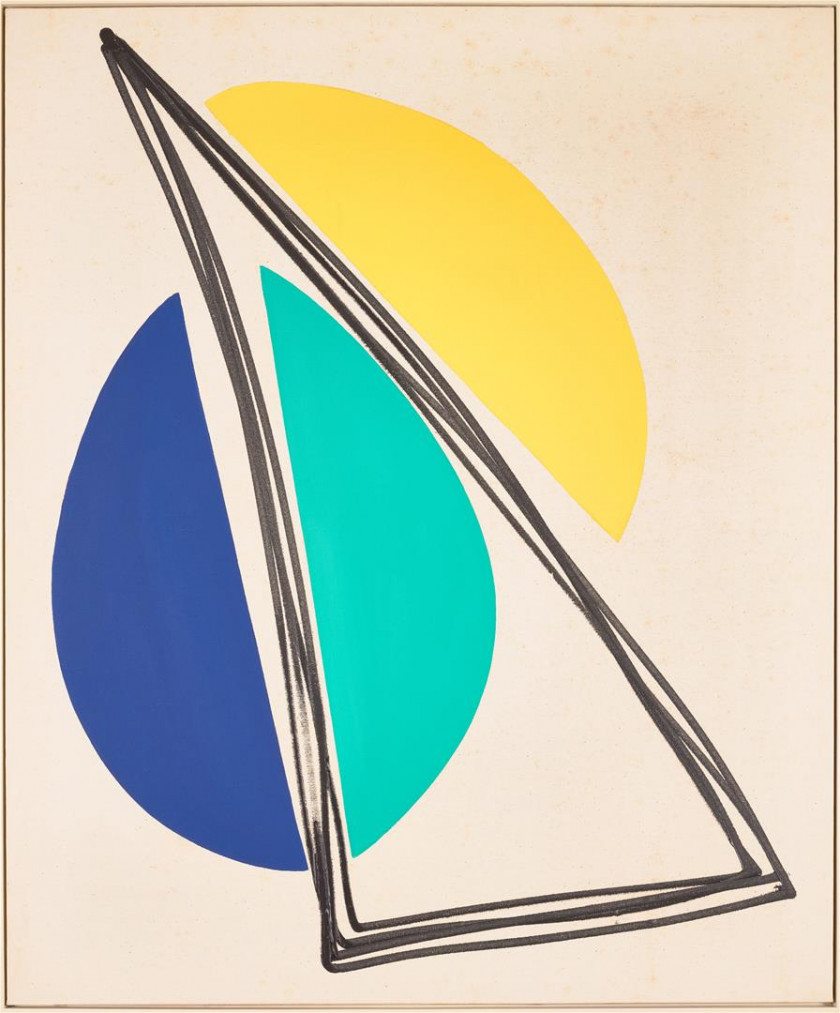Sem Título (9) [Untitled (9)]
painting


1990
Acrylic on canvas
120 x 99,5 cm
Presented at Galeria Pedro Oliveira in 1990, the year in which the artist died, Untitled (9), is one of the last acrylic paintings by the Évora's artist Joaquim Bravo. It also integrated the important retrospective that the Calouste Gulbenkian Foundation Modern Art Centre dedicated to him in 2000.
The game between the gesture of writing and the precision of geometry, a recurrent theme in Bravo's work, is resolved in this painting in a complementary way. Known for his studies on reams of butter paper - a privileged support for the countless variations he developed - here too the artist turns to this research exercise. Presented in the 2000 exhibition, four preparatory drawings give clues about this work and reveal his interest in the idea of intercession of plans and delimitation of fields through colour and lines.
In the final composition, Bravo works with triangular and circular forms by freely sketching a rectangular triangle, repeating four times in gestural movement, the lines of its outline. Painted in acrylic, these black lines are close to the type of line we associate with drawing. To this form that dominates the composition, the artist associates three irregular semi-ellipsis, filled with flat colours: yellow, dark blue and turquoise. In contrast to the light background, these shapes assume a graphic quality, marked by rhythm and symmetry. Ironically, this non-representative painting lies between geometric abstraction and landscape allusion. The figurative parody is based on the reading of three layers, reinforced by the colours that insinuate the transition of the sun between the sky and the sea. Reflecting on these questions, Joaquim Bravo writes in 1990, Affirming the absence of meaning and the need for meaning, this is where the meaning of the work lies.
Rita Salgueiro